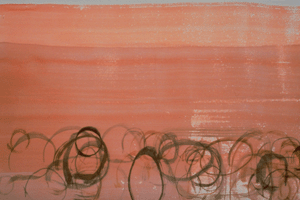Wholeness and fragmentation has been an interest and theme in my work since reading David Bohm almost 10 years ago. He was a theoretical physicist and a pioneer in developing quantum theory. While much of his work is beyond my ken, his writings are surprisingly understandable. I’ll quote the passage from “Wholeness and the Implicate Order” that struck my fancy, sticks with me, and informs these works:
“...to some extent, it has always been both necessary and proper for man, in his thinking, to divide things up, and to separate them, so as to reduce his problems to manageable proportions... ...The notion that all these fragments are separately existent is evidently an illusion, and this illusion cannot do other than lead to endless conflict and confusion.”
While Bohm approaches this concept from quantum physics, Buddhist scholars have reached a similar standpoint, described among other places in the Heart Sutra, and, while complex, can be summarized in the key portion of that Sutra: Form is Emptiness and Emptiness is Form.
Interested in more?
“Space is not empty. It is full, a plenum as opposed to a vacuum, and is the ground for the existence of everything, including ourselves. The universe is not separate from this cosmic sea of energy.” – David Bohm.
The holomovement is a key concept in David Bohm`s interpretation of quantum mechanics and for his overall worldview. It brings together the holistic principle of “undivided wholeness” with the idea that everything is in a state of process or becoming (or what he calls the “universal flux») For Bohm, wholeness is not a static oneness, but a dynamic wholeness-in-motion in which everything moves together in an interconnected process. The concept is presented most fully in Wholeness and the implicate order published in 1980.
He maintains that space and time might actually be derived from an even deeper level of objective reality. This reality he calls the Implicate Order. Within the Implicate Order everything is connected; and, in theory, any individual element could reveal information about every other element in the universe.











































